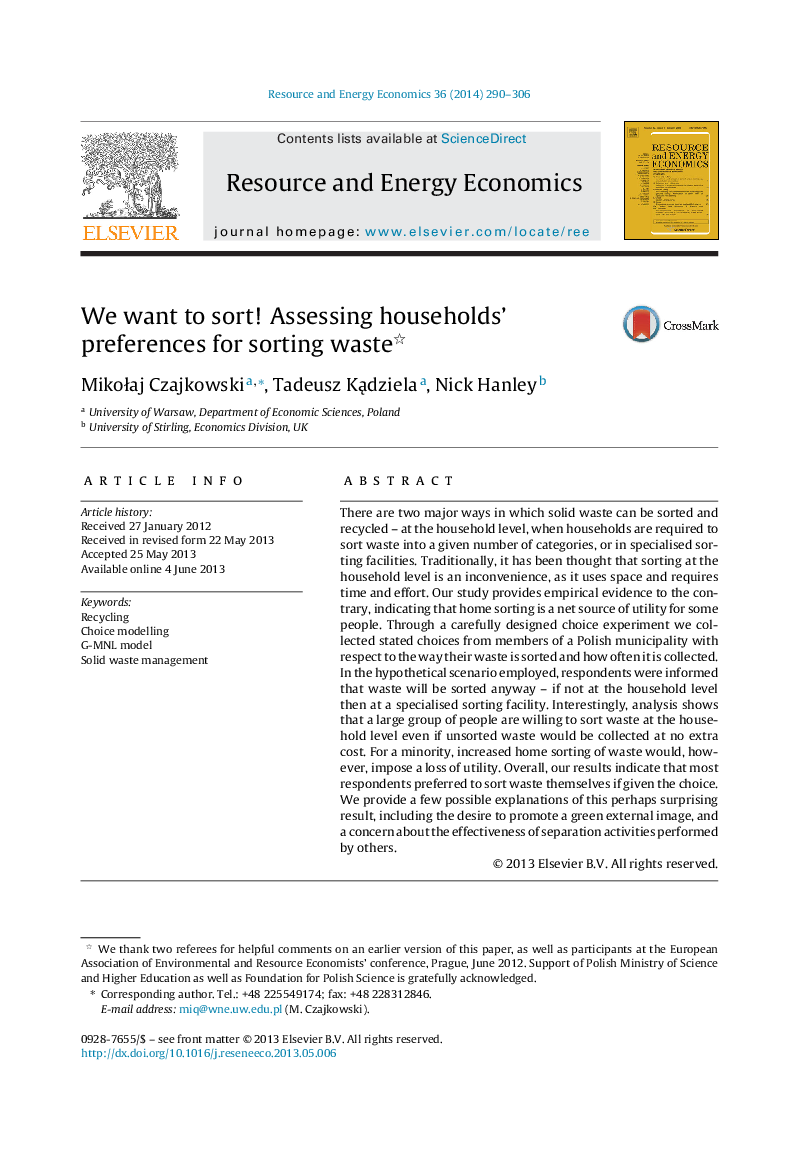| Article ID | Journal | Published Year | Pages | File Type |
|---|---|---|---|---|
| 985068 | Resource and Energy Economics | 2014 | 17 Pages |
•Discrete choice experiment used to elicit preferences towards solid waste sorting.•Household level sorting preferred to specialised sorting facilities.•Maximum WTP for number of sorting categories and frequency of collection calculated.•Special attention given to preference and scale heterogeneity (G-MNL model used).
There are two major ways in which solid waste can be sorted and recycled – at the household level, when households are required to sort waste into a given number of categories, or in specialised sorting facilities. Traditionally, it has been thought that sorting at the household level is an inconvenience, as it uses space and requires time and effort. Our study provides empirical evidence to the contrary, indicating that home sorting is a net source of utility for some people. Through a carefully designed choice experiment we collected stated choices from members of a Polish municipality with respect to the way their waste is sorted and how often it is collected. In the hypothetical scenario employed, respondents were informed that waste will be sorted anyway – if not at the household level then at a specialised sorting facility. Interestingly, analysis shows that a large group of people are willing to sort waste at the household level even if unsorted waste would be collected at no extra cost. For a minority, increased home sorting of waste would, however, impose a loss of utility. Overall, our results indicate that most respondents preferred to sort waste themselves if given the choice. We provide a few possible explanations of this perhaps surprising result, including the desire to promote a green external image, and a concern about the effectiveness of separation activities performed by others.
